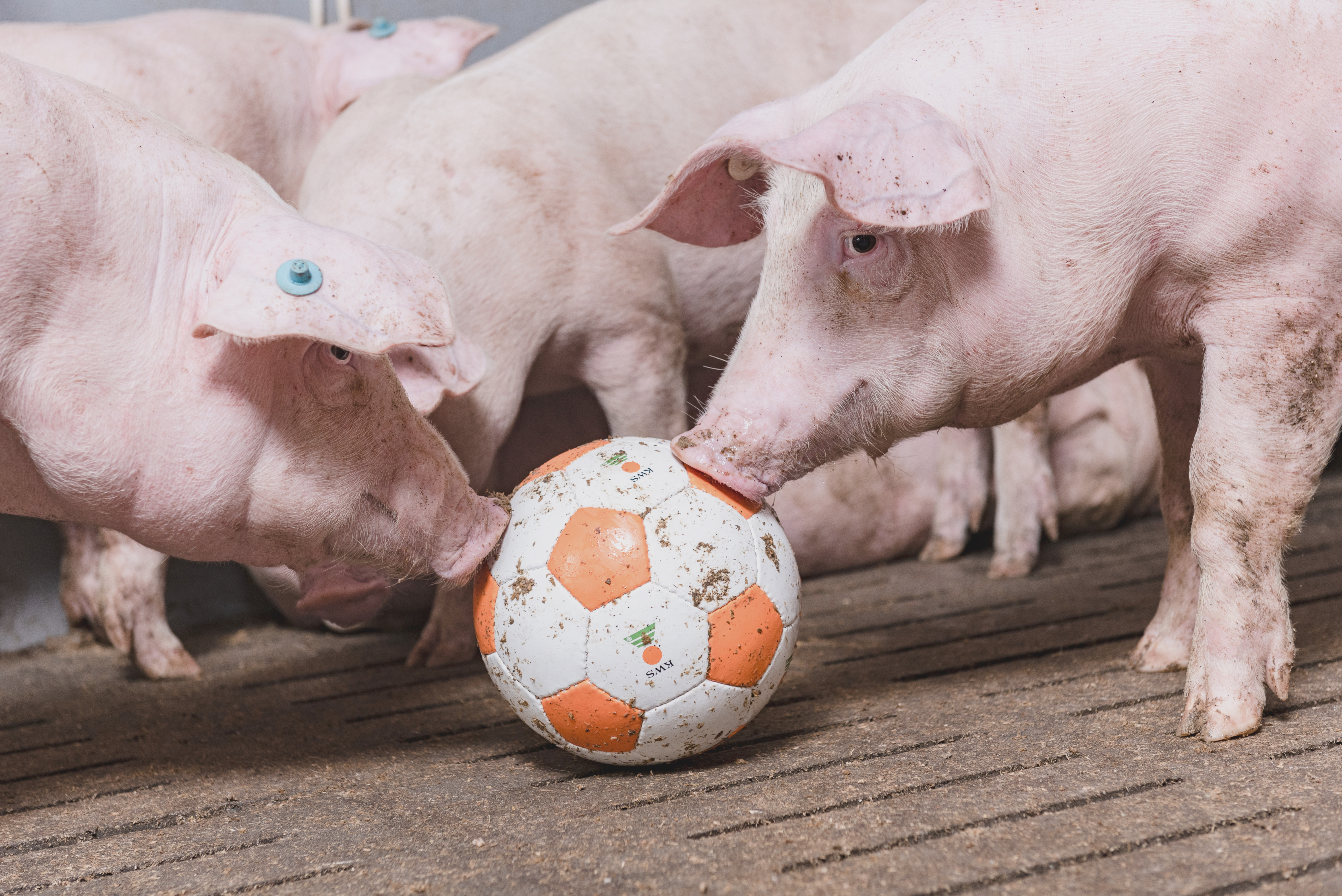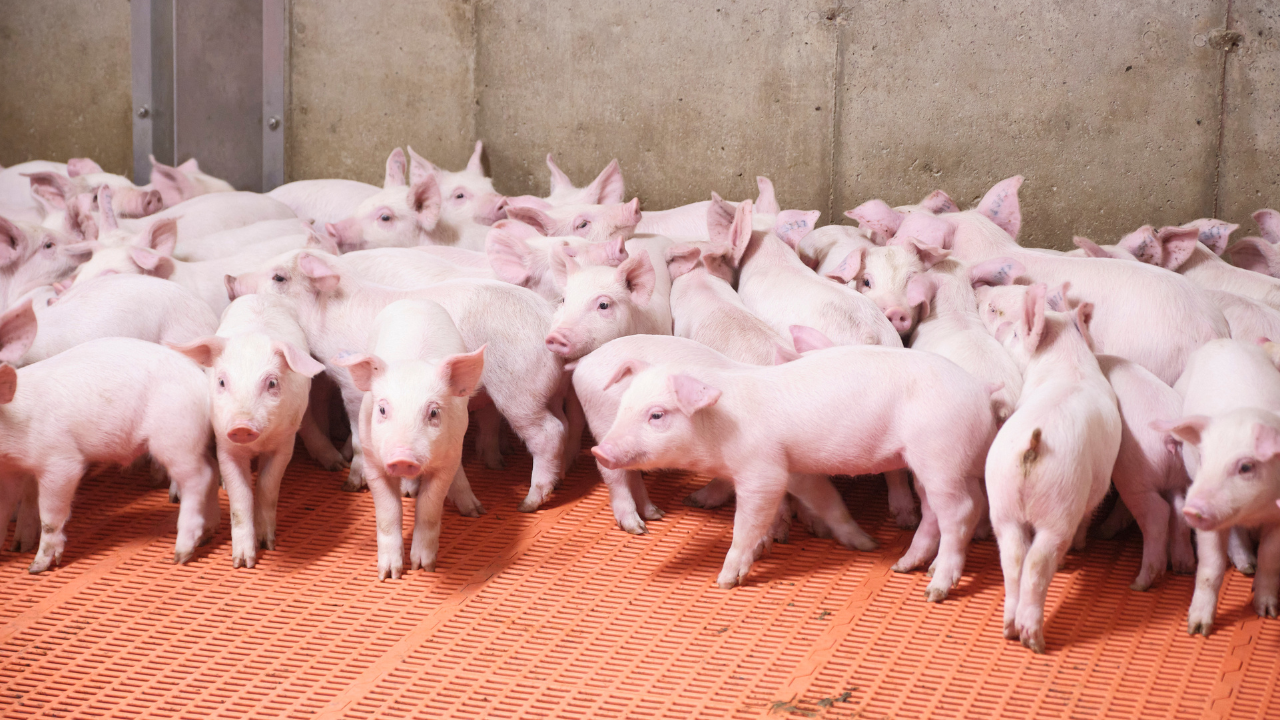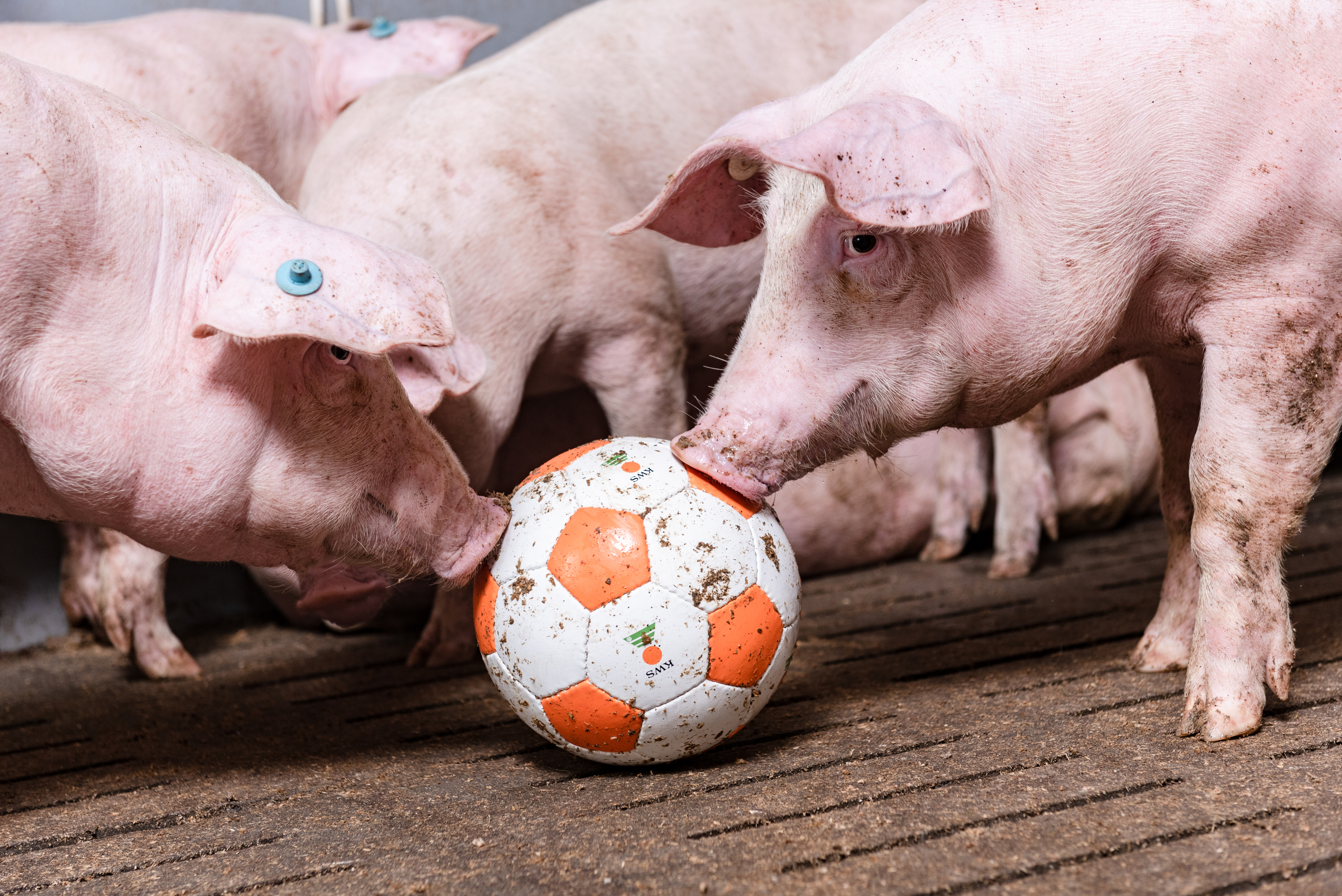Hybrid Rye for Growing/Finishing Pigs
More Hybrid Rye for Pigs Pages: Hybrid Rye for Sows | Hybrid Rye for Nursery Pigs | Hybrid Rye for Growing/Finishing Pigs
Hybrid rye can be included at high levels in the diets of grow-finish pigs. Pigs that were fed hybrid rye in the nursery phase can continue to step up inclusion levels as they grow. If they are introduced to hybrid rye for the first time in the grower barn, start them at 10-20% inclusion and increase levels with each diet phase change.
To maximize performance and efficiency, hybrid rye can be included up to 50% of the diet for finishing pigs. Higher inclusion levels may be used without affecting daily gains, but feed efficiency may decrease due to the higher fibre content of the diet. Many grow-finish pigs around the world are successfully fed 50% hybrid rye in their diet.
Several research studies in Canada have shown that hybrid rye can successfully replace portions or corn or wheat in the diets of grow-finish pigs. In one commercial study, the average daily gain and average daily feed intake of pigs was equal to control pigs when hybrid rye was included up to 50% by the end of the finisher phase. In another commercial study, hybrid rye successfully replaced all wheat in the diet of finishing pigs (66% inclusion) with no impact to animal performance.
On some farms, when hybrid rye has been included into grow-finish rations, there has been decreased incidence of tail-biting, calmer pigs and lower mortality rates, which translates to improved income over feed costs to the producer.
Functional Attributes of Hybrid Rye for Grow-Finish Pigs
- Consistent crude protein content with excellent SID amino acid content
- Prebiotic effect of fibre boosts the presence of beneficial bacteria and short chain fatty acid production, leading to improved gut health
- Lowest iodine value product (IVP) of all cereal grains, making it an ideal choice for improving meat quality and firmness
- Potential for reduced tail-biting, treatment rates and mortality
References:
Bussières, 2019; Smith et al., 2019; Smit et al., 2023




